 An Electric MPV: MG M9 Unveiled In India Ahead Of Its Showcase At The Auto Expo 2025
An Electric MPV: MG M9 Unveiled In India Ahead Of Its Showcase At The Auto Expo 2025
 New Skoda Enyaq Revealed: Everything You Want To Know
New Skoda Enyaq Revealed: Everything You Want To Know

Tata Aria: Design & Style
EXTERIORS
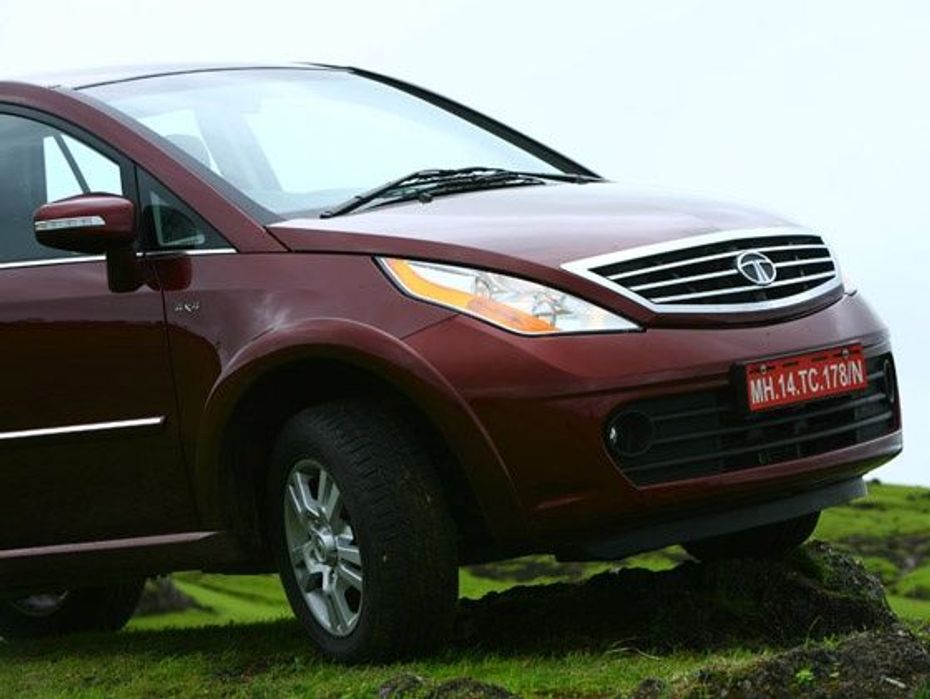
The front end with the new corporate grille and those stacked double barrel headlamps endow it with terrific presence. The large wrap around bumper with the huge air dam and the fog lamps recessed in it add to the occasion and the Aria begins to sing its own solid tune from here on.
The Aria breaks fresh ground for an all Indian effort but if you care to see closely you can make out that there is quite a bit of the European influence here. The proportions and bits of the silhouette present themselves akin to the Mercedes-Benz R-class but I must say right here that the Indiva came before the R-class so no need to jump to accusatory comparisons! There is strong visual evidence of a cab-forward stance thanks to the rake of the A-pillar which seems to start right above the front wheel arch and sweep up and back. Visually the car seems to be low but you can't miss the large proportions (4780mm long, 1780mm tall and 1895mm wide), indicating that the exterior body designers have done a fine job of disguising the bulk.
With a pronounced crease just below the chrome beltline (a nice design element) as well as the overtly visible sill plus those pumped up wheel arches filled to the full with 235/65 R17 radials, the Aria stands out bold and proud, not ashamed to let its presence do the talking. The rear houses Tata's trademark Christmas tree tail lamps, albeit with a different take which make them gel very well with the crossover’s rear. Smart contours and accents in just the right places, along with the two elliptical exhausts take most of the boxiness away from the rear, which has often been the bane of cars of its class. The MPV way of designing cars which lies midway between large and chunky SUVs and sleek sedans is not the most conducive for churning out a stunner, but the Aria does exactly that which should be taken as an even larger pat on the back for the design team which penned the lines.

I must make mention to two details here before we move on to the interior and the first and not so very obvious detail is that the Arai features body on frame construction in place of an all monocoque layout. There are pros and cons to both approaches but when you understand that even the Innova comes with a body welded to its chassis to present a sort of a semi-monocoque body structure, the Tata boffins obviously didn't want to push way beyond their capability for a monocoque this large. In time, with expertise culled from Land Rover they will have a proper monocoque-d vehicle of such large proportions but herein the approach still works well.
The second detail worth mentioning is the exceedingly high level of fit and finish plus the terrific turnout of the vehicle. The surface finish is of an extraordinary high order and the panel gaps in the shut lines are patently uniform and very aesthetic. Getting to this level takes some doing and definitely it shows the strides the firm has made in this regard. Getting to making a taut stiff structure with god fit and finish also aids NVH which is another positive fallout for the Arai.
INTERIOR
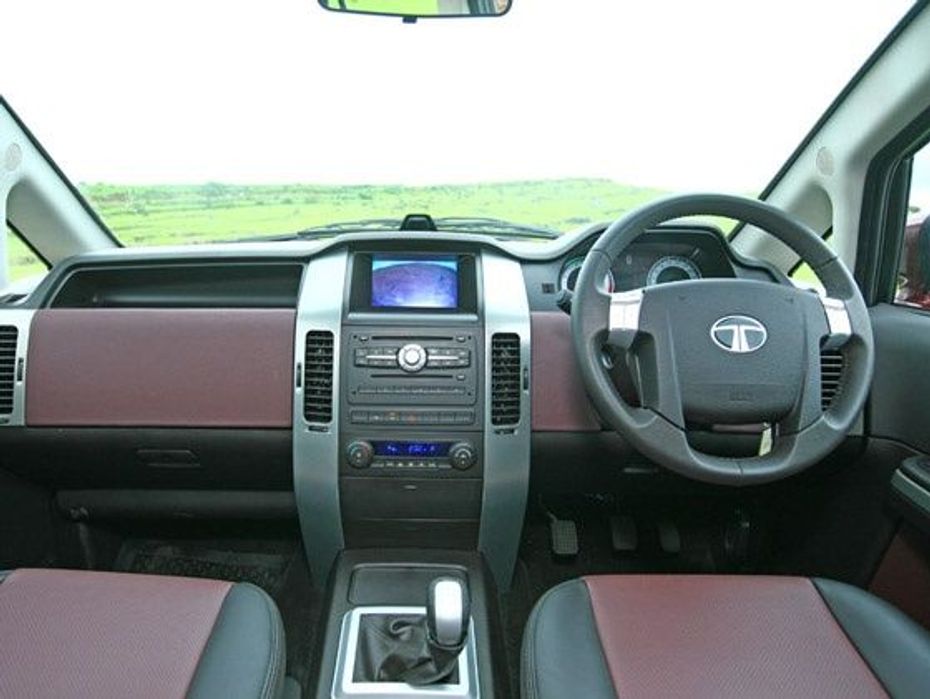
From the inside, the Aria once again surprises with a level of plushness and well being not seen on made-in-India cars before this. The floor of this crossover remains low to ease ingress and egress, which is a welcome change from the otherwise tall and snarling SUVs, which occupants must clamber into before they feel big and indestructible! Leather cladding on the seats follows the black and burgundy colour scheme that is also seen on the dashboard. The scheme makes for a welcome change from the run of the mill beige treatment on the insides. After testing and using all the cars present in the market on a regular basis, the ZigWheels team has come to realize how difficult it might be to keep beige interiors clean, especially in the Indian context in cars capable of mud-bashing. From the driver's seat, the silver centre console with the LCD screen for the in-dash navigation system all hark to the more high-end imported vehicles that we have come across. Steering mounted controls make their appearance on the Aria too.
When it comes to features, the car seems loaded up to the gills with them. Be it the cruise control which can be activated from the steering, rain sensing windshield wipers and the darkness sensing headlights, even the electrically adjustable rear view mirrors – all work towards bringing technology to the aid of the driver to ease the small things. The parking camera at the rear is available only on the fully-loaded version of the car, but is a proper boon and adds massively to the practicality of this Tata biggie.

The equipment is not just for the driver though. Passengers get their own vents for air con in not just the second but also the third row, which work like a charm under the strong cooling offered by the auto climate control system. Overhead cubby holes for storage are in extreme numbers too - eight to be precise, but have been smartly integrated along the length of the roof without intruding or interfering in any way with the cabin layout and feel. An additional cooling vent offered in the glove box fails in its intention to chilling drinks, but manages to keep them at a little under room temperature which is welcome anyway.
Coming to the seats and their arrangement, more innovations present themselves. Bucket seats for the driver and the co-driver are adequately contoured and firm. The driver's seat is adjustable for height, and also comes with adjustable armrests which we found interfered quite a bit and got in the way for the driver. The second row is wide and cushioned enough to seat three adults abreast in relative luxury, with sufficient knee room. The third bench may seem a little cramped for serious occupation at first glance, but settle into it and the fit is comfortable, if snug. The entire second row of seats can also move fore and aft on rails, to ease entry into the third row space and also to enhance knee room for the backbenchers. With a 60-40 split for the second row and a 50-50 split for the third, the seating offers a variety of options to liberate storage space. All flattened out, the Aria has enough space at the rear for two adults to grab a decent night’s sleep, along with their bed!
Tata Aria: A closer look!
Tata Aria: Technology moves the ‘Aria’ way
CHASSIS & SUSPENSION
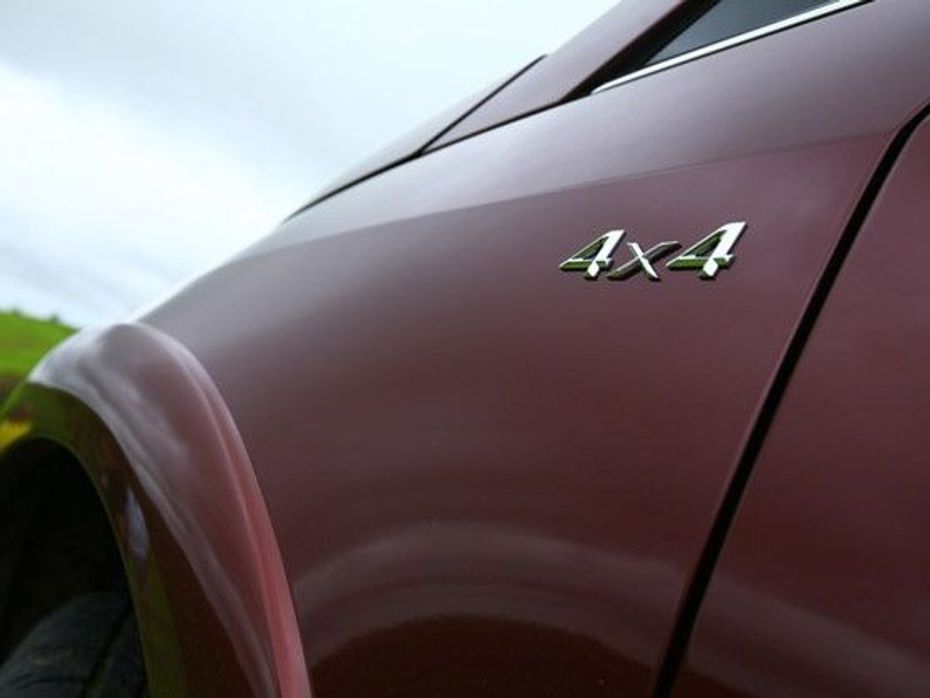
As already mentioned the Aria employs a body on frame construction and given the fact that previous Tata products have always sported a very good balance between ride quality and stale handling, the overall configuration veers towards this aspect itself. First off is the new chassis which employs many frame members constructed using the hydroform manufacturing process. The vehicle sports a long 2850mm wheelbase and the vehicle has been tuned to employ 17-inch or 18-inch wheels depending on the market it is earmarked for. A double wishbone front suspension set-up is employed while the rear features a 5-link unit operating with separate coils and shock absorbers. Overall ride centre heights have been optimally configured on the Aria, with the result that the chassis better handles body roll characteristics while yet delivering a very comfortable ride.
Disc brakes all around are an important feature, those in front being of the ventilated type (302mm in diameter) while the rear features solid discs of 316mm diameter. The larger size of the rear discs is to accommodate the mechanical drum set-up for the handbrake. The Aria has ABS as standard but the more important aspect is that it also has EBD (Electronic Brake force Distribution) fitted as OE and this combination of ABS with EBD is a welcome move. If that's not all, the Tata Motors team has gone further ahead to bolstering even better vehicle control and safety by adding in ESP (Electronic Stability Program) plus TCS (Traction Control System), as an option on the top line Pride version. The Aria, for India, rides on 17-inch alloy wheels shod with 235/65 R17 tubeless radials and the suspension has been tuned to these tyres to deliver the best blend of footprint, grip and ride stability. Hydraulically assisted rack pinion steering gear is employed.
DRIVETRAIN
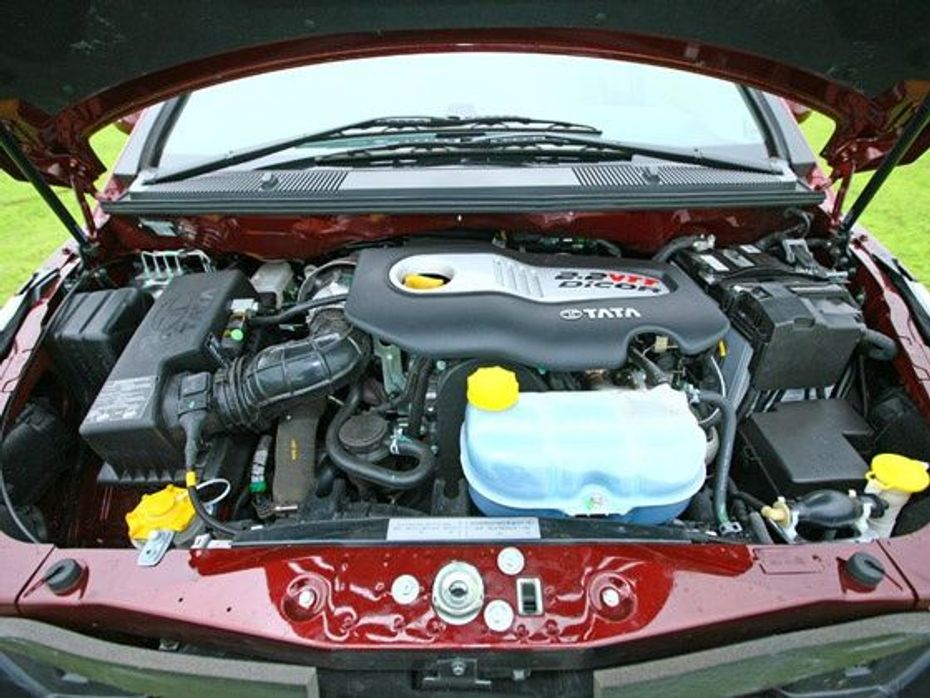
The Aria packs in the 2.2-litre DiCOR four-cylinder engine but this has now been upgraded not just for stronger and more consistent delivery but it also has been tweaked to ensure low NVH and smoother torque supply. This 2179cc inline four-cylinder engine feeds off a variable nozzle Garrett GT17 turbocharger (made by Honeywell) and the hot mass of air is further cooled by routing it through an all new large capacity intercooler. Overall these bits have helped the engine's performance (140PS at 4000rpm and 320Nm of torque at 1700-2700rpm) delivery appreciably but I do have an issue with the low placement of the intercooler which in our terrain is susceptible to damage and by extension loss of power from the engine.
The engine development team at Tata Motors wanted the engine to deliver strong performance but also cut down massively on NVH so a range of measures were adopted to ensure strong delivery plus low NVH. The adoption of a cast aluminium ladder frame between the cylinder block and the oil sump helps in low NVH while also ensuring strong structural rigidity to the motor. However the biggest detail is the adoption of the dual mass flywheel, a first for Indian automobiles. What this piece of kit does is to eliminate or damp out torsional vibrations induced by the engine and prevent them from being transmitted into the cabin. The ability of the engine to further operate silently and smoothly at low revs without any palpable jerks or hesitation delivers big, not just in terms of driving pleasure but also aids the fuel efficiency as well.
5-SPEED GEARBOX
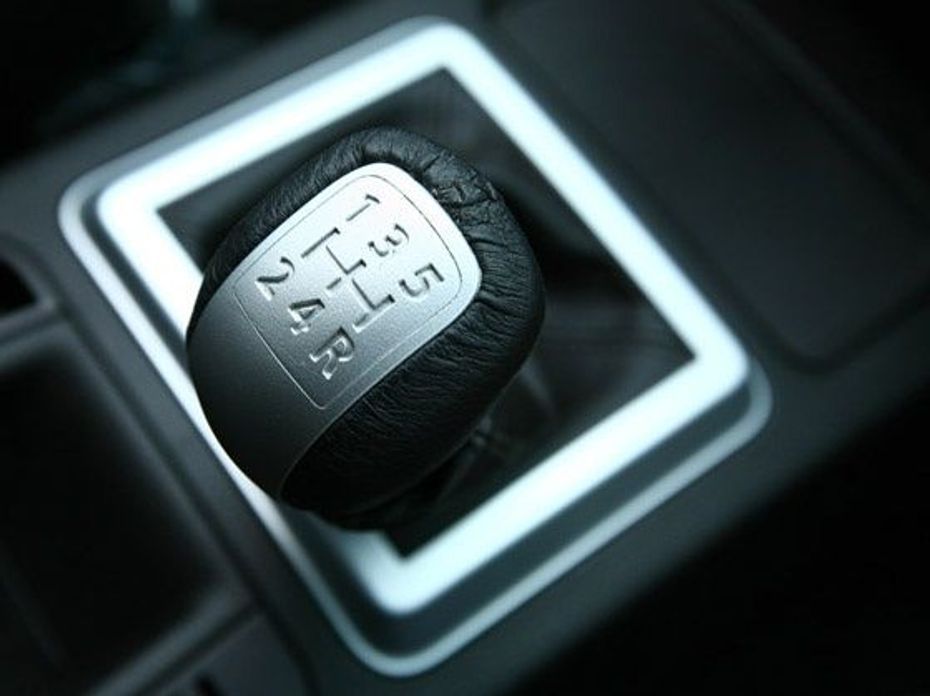
A big step forward in the large passenger portfolio of Tata Motors is the advent of the Mk. II version of the 5-speed gearbox. This transmission employs all new casings which apart from a revised select and shift mechanism also features new carbon-lined steel synchro-cones for better and efficient shift quality, feel and effort. Overall optimization of the engine-transmission package is reflected in actual operation but there is more to the drivetrain which aids the Aria in being true to the crossover tag.
This takes in the TOD-AWD system or the Torque-On-Demand All-Wheel-Drive system where by there is an added transfer gearbox in the predominantly rear wheel drive system which helps to distribute and/or regulate the delivery of torque in conditions where the wheels are slipping and to overcome this wheel spin and loss of traction this system intervenes on its own and keep forward progression. The transfer case is electronically actuated to switch from rear wheel drive to all wheel drive and this can be done on the fly as well. The electronic brains in the ECU unit take in inputs from front wheel and rear wheel speeds, the throttle position and also senses the ABS gadgetry plus the 4x2 mode switch to help the right amount of torque to be fed so that the vehicle has enough grip and stability. The key aspect here is that this is not to be confused as 4x4 capability as in SUVs but more towards the torque being your friend in slippery conditions, whether on or off road. Tata Motors developed this all wheel drive layout in conjunction with DIVGIWarner which has a collaboration with noted transmission maker Borg Warner (remember the Borg Warner trophy for the Indy 500 winner? Rings a bell, doesn't it?). In all wheel drive mode the torque split is anything from 10:90 in normal running while in extreme conditions the torque delivery could get to a ratio of as much as 45:55 front to rear.
Tata Aria: Versatile Performer
PERFORMANCE
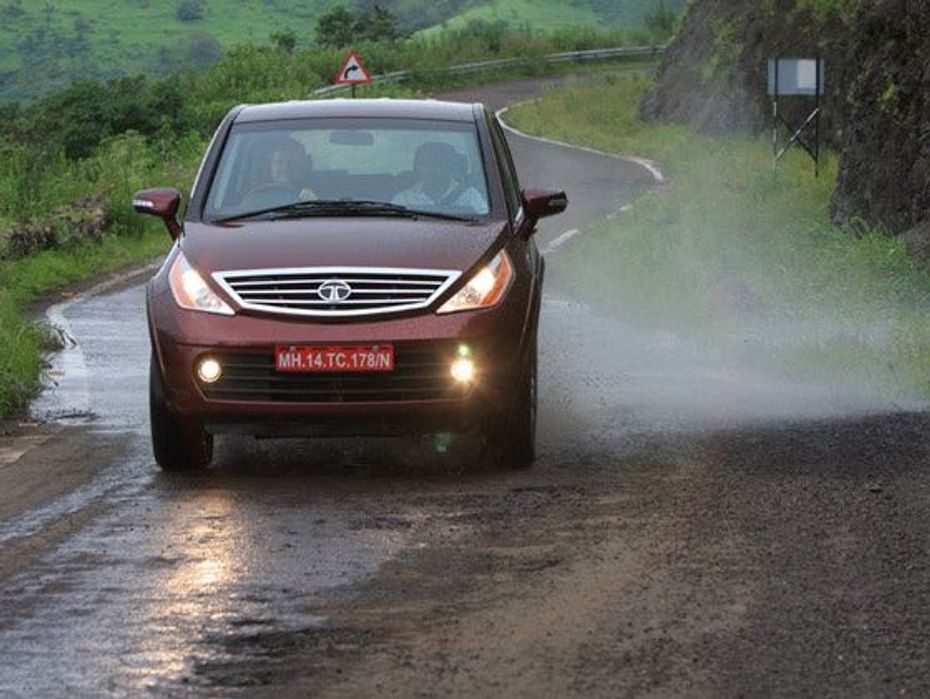
The first thing that strikes you about the vehicle is the way the engine fires into life and the rock solid nature of the machine with hardly any rocking on start-up or slight vibes. This is a trait which continues right through when on the move. Overall the strides taken in reducing NVH are manifest in the feel you get all through the drive experience. Even though the max torque is supposed to be delivered between 1700 to 2700rpm, everything only starts to happen from around 2000rpm onwards and from there on the Aria is a thundering performer – relative to its size and weight. Driving through the gears is all about keeping it in the rev band above 2000rpm and it is only in this mode that she delivers otherwise one has to constantly resort to downshifts and this can play havoc with the fuel efficiency.
Getting it to thrust out of fast flowing corners is the pleasureable chore but getting it to dart in and out of traffic when at slow speeds means sustained work on clutch pedal, gearshifter and accelerator pedal. The amount of torque developed is not an issue, getting it to make its effort felt means getting it lower down the rpm range. Nevertheless the Aria doesn’t disappoint in the way she delivers but neither is she scintillating in its delivery. Zero to 100km/h I achieved in 16.32 seconds while the quarter mile is dispatched in 20.35 seconds. Mind you this is not a car built for speed or thrust but the figures recorded speak exactly as to the genre of vehicle it is and its intended application. Even then a 167km/g plus top whack is creditable.
In this very same vein, the fuel consumption is commiserate with the weight, girth and bulk of the vehicle plus the performance. An overall fuel consumption of 9.95kmpl is not bad and with the creature comforts plus the luxurious feel afforded; the Aria in fact does better than some small cars. In our city driving mode the Aria delivered 9.0kmpl while on the highway run she batted out 12.8kmpl reflecting in the 9.95kmpl overall.
RIDE & HANDLING
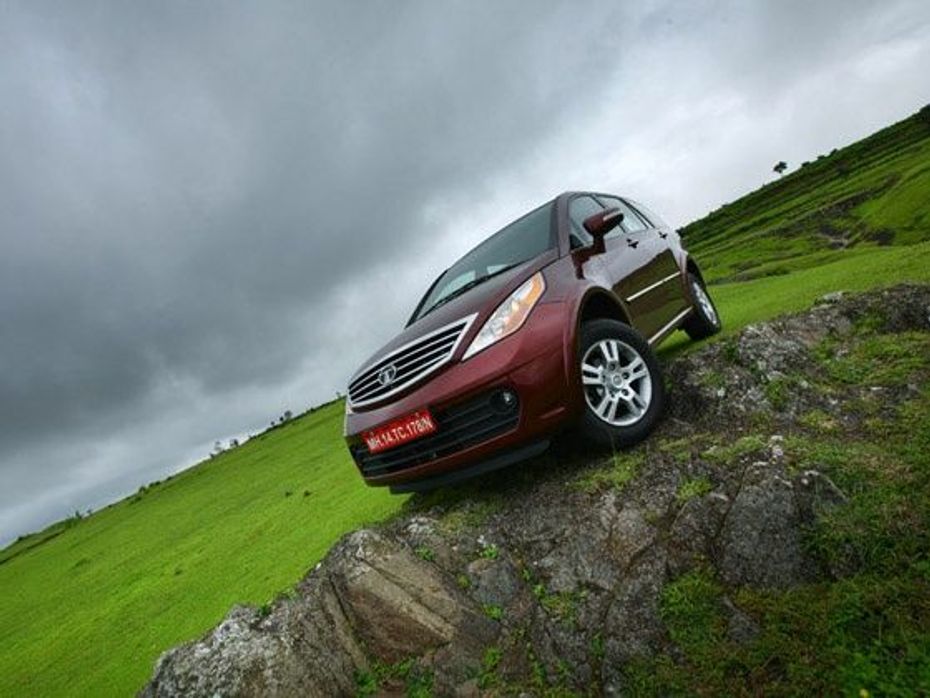
Let's understand one thing: the Aria is a large, long and wide car but it has a terrific driving position which is a key ingredient in getting this big brute to handle. The height-adjustable driver's seat is well configured for thigh and side support and the ergonomics from here on are excellent. The new design steering wheel with function controls helps the driver focus on the job ahead. Dynamically there is much to marvel as the Aria displays very good body control virtually everywhere through the spectrum except when you try to unsettle it by pitching it into corners rather excessively fast and hard. This is no sports car and it needs progressive steering inputs to be fed in, drive her in any other way and she protests rather vigorously with sizable body roll. Drive her normally and the overall stance and poise is great, the large wheelbase and the wide track plus the 235mm footprint of the tyres helps grip over any and every type of surface.
The steering is spot on and just correct as regards how quick - it is neither too fast nor too slow, critical because getting a big ship to turn, oops sorry, a large crossover to effect directional change requires precision and also the perfect steering speed. There is good feel as well from the steering but on one of the three Arias we experienced, we did have severe vibrations from the steering column. On bad road sections the steering wheel does want to get into a shimmy and I think that the Aria would do well to get a steering damper given its size.
We also had some issues with the braking efficacy, the brakes being rather quick in their bite and however much we tried to modulate, the car seemed to get its wheels locked up. If that wasn’t all, in major panic braking situations, the front end dive was rather pronounced and this is another detail which needs to be controlled. On the positive side, the turn-in from the steering is precise and very pleasureable and the ride quality, though a tad on the firm side, is really comfortable even over very long distances, those in the back benchers included.
LIVING WITH THE ARIA
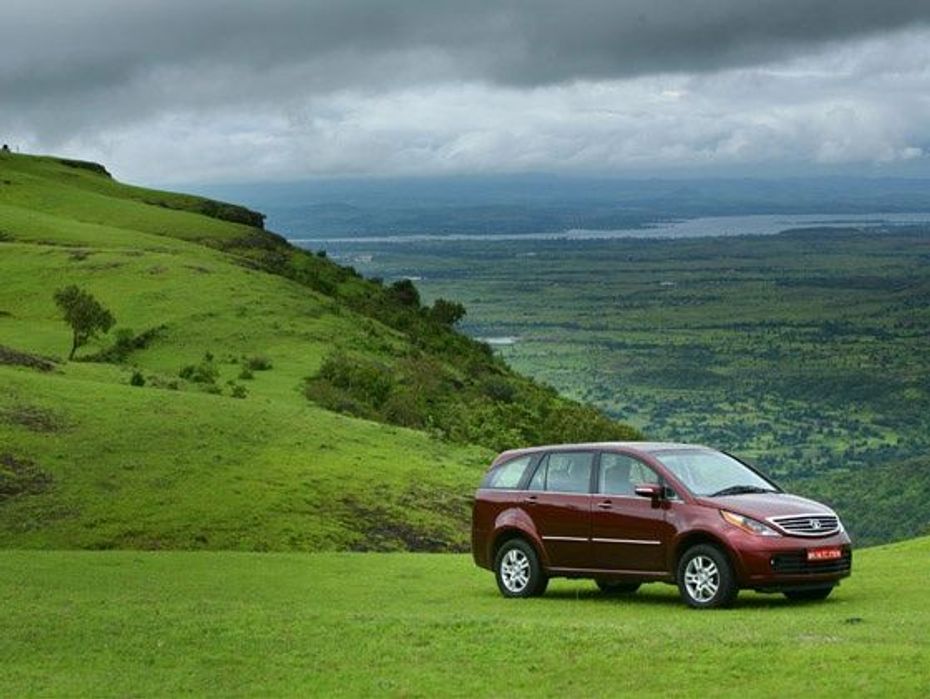
Tata Motors offers the Aria in two trim versions namely the Prestige and the Pride. The Pride is the fully loaded version which comes with a full complement of six air bags (two in front and four curtain air bags), ESP and TCS, cruise control, a built in navigation system (developed jointly with Navteq) and full leather upholstery. Both Presitge and Pride versions additionally feature dual AC for all three rows with climate control, rain sensing wipers and auto headlights. The navigation screen converts into a screen for the rear camera which helps the driver while reversing.
The fit and finish within the cabin is exemplary for a Tata Motors product and genuinely shows the intent as well as the ability to close the gap to rivals from other brands. However, I still think that a bit more thought process could have gone into it as regards getting the seats to truly fold flat and help the flexible seating process to be absolute fool proof. I also didn't much like the blue screen for the digital information display on the instrument panel, the figures and the intensity being way too feeble to be deciphered in a flash. If that wasn’t all, the effort needed to actuate the clutch pedal is a tad too excessive, even for a crossover.
Using the Aria to pack in the kids bicycling gear and heading for the hills with them and their friends showed off the versatility and the scope of how crossovers can delight. Lugging ability is great but at times you would need to downshift because the revs need to be brought back to the meaty part of the torque band. The vehicle has massive presence and impresses both within and outside.
In essence the overall verdict is one where we can stick our necks out and say the effort is competent. After having experienced the Manza and the Indica Vista as very well engineered and put-together automobiles, our assumption pointed to the Aria also being in the same vein. Here I can only say that the Aria seems to be stuck in W.I.P. mode (work in progress) and I hope some of the rough edges are smoothened before deliveries commence. They need to be because the vehicle is just right for the times and has everything in place to be not just well accepted but also be a success in the market, grabbing customers not just for what it stands for but with price points (expected to be in the Rs 12 to 14 lakh range) targeting executive saloons in that range. This is the challenge and I hope Tata Motors can get the Aria singing to the right notes.
India's largest automotive community
 An Electric MPV: MG M9 Unveiled In India Ahead Of Its Showcase At The Auto Expo 2025
An Electric MPV: MG M9 Unveiled In India Ahead Of Its Showcase At The Auto Expo 2025
 Hyundai Creta Electric: Features And Specifications Revealed! Here Is A Detailed Look
Hyundai Creta Electric: Features And Specifications Revealed! Here Is A Detailed Look
 Mercedes-Benz EQS SUV Now More Affordable! 450 5-Seater Launched At Rs 1.28 Crore
Mercedes-Benz EQS SUV Now More Affordable! 450 5-Seater Launched At Rs 1.28 Crore
 Toyota Land Cruiser 250 (Prado) Set To Be Revealed At The Auto Expo 2025! Here’s Everything You Need To Know
Toyota Land Cruiser 250 (Prado) Set To Be Revealed At The Auto Expo 2025! Here’s Everything You Need To Know
 MG Astor First Drive Review: Standing Out In Style
MG Astor First Drive Review: Standing Out In Style
 2021 Mahindra XUV700: First Drive Review
2021 Mahindra XUV700: First Drive Review
 Kia Sonet Driven: More Than Just A Great Brochure?
Kia Sonet Driven: More Than Just A Great Brochure?
 Mercedes-Benz G-Class Electric
Rs. 3.00 Crore
Mercedes-Benz G-Class Electric
Rs. 3.00 Crore
 Toyota Camry
Rs. 48.00 Lakh
Toyota Camry
Rs. 48.00 Lakh
 Honda Amaze
Rs. 7.99 Lakh
Honda Amaze
Rs. 7.99 Lakh
 Audi Q7
Rs. 88.66 Lakh
Audi Q7
Rs. 88.66 Lakh
 Mahindra XEV 9e
Rs. 21.90 Lakh
Mahindra XEV 9e
Rs. 21.90 Lakh